Resources
Articles
Electric Arc Furnace - Working Hearth Installation
Monolithic Hearths - Rammed
Rammed monolithic working hearths are not common today in electric arc furnaces. However, products like Permanente 165-AF and Permanente 98-AF with their unique bonding systems have displayed exceptional volume stability at elevated temperatures while exhibiting maximum resistance to metal oxides and basic steel slags can be used if it suits a shop's practice.
Rammed monolithic working hearths, as with any other type of construction, should be properly installed to ensure maximum serviceability. Therefore, Resco Products recommends that the following procedures be studied completely before beginning installation.
Installation procedure for monolithic rammed bottoms:
- Clean the sub hearth of all foreign materials.
- Make the following equipment available at the furnace:
- Minimum of three flat shovels
- One Rake
- Two pneumatic rammers with flat steel heads of 4” to 6” diameter for rammed bottoms
- A paddle mixer capable of mixing at least 500-lb. batches
- When mixing, care should be exercised to ensure that the proper amount of water is added. Proper moisture content produces optimum densities and maximum strengths. Normally 3 ½ -4% (3 ½ - 4pts. / 100-lb. Bag) water is added for ramming. However, the best policy is to follow the mixing instructions on the bag. Mixing water should be clean and drinkable. Soluble salts sometimes found in cooling water or river water can reduce the effectiveness of the bonding agents.
- With the mixing started and enough material conveyed to the furnace to cover the flat with 4” to 6” of loose material, ramming can commence. Do not ram more than 6” of loose material at one time because it is likely that the bottom portion over 6” will not achieve maximum density. Stop ramming when it is evident that the material is no longer compacting. Scar the surface with a rake and continue ramming each additional layer until the flat is at its designed thickness.
- With the initial material in place, additional material should be conveyed to the furthermost part of the furnace from the point of entry. Starting from this point, the step should be completed working in both directions back toward the point of material entry. Any interruption in placing material and placed material should be scalled to permit the bonding of subsequent layers.

Leave a comment